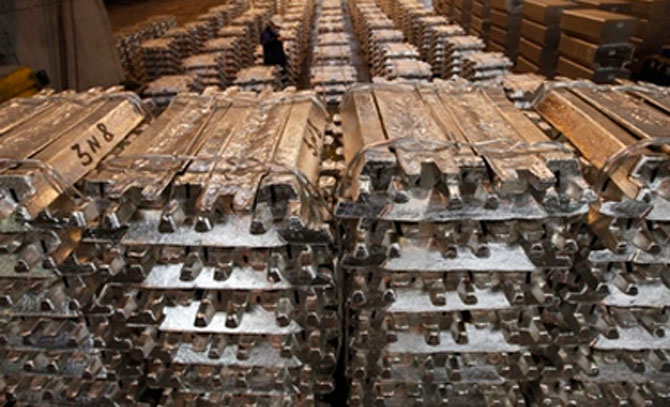 | « Back to article | Print this article |
Are PSU stocks worth betting on?
Retail investors should carefully follow recent moves on high dividend payouts or stake sales in state-controlled companies
The scrips of listed public sector companies (PSUs) are buzzing with activity since the government began making various attempts to raise more cash from these, to contain its fiscal deficit for the year to 4.8 per cent of the gross domestic product (GDP).
The government is offloading residual stake in Hindustan Zinc, getting its companies to pay more dividends, such as in Coal India, and allowing cross-holding of Oil India with other PSU oil companies. All these impact the valuation and outlook of the PSUs concerned.
The question for investors is how they should go about investing in PSU stocks. The decisions affect PSUs differently. Coal India, for instance, will see its cash and investment balance fall by nearly Rs 20,000 crore (Rs 200 billion), including dividend distribution tax.
This will most certainly impact its other income, due to come down next year. The cross-holdings rise in IOC will also impact companies like Oil and Natural Gas Corporation (ONGC), which will see a cash outflow.
Click on NEXT for more...
Are PSU stocks worth betting on?
Experts reckon the decisions in question are not driven by value creation but to solve the immediate problem of the government. Says Vikas Gupta, executive vice-president, Arthveda Funds Management: “It's clearly not a well-thought move and will not extract the best out of these companies. You have to do value creation for all stakeholders and some of these moves are not exactly creating value.”
Hence, experts suggest investing in PSUs should now be driven more by careful evaluation of the fundamentals, as these changes could further impact revenue and profitability. For example, if the return on capital employed improves, that could lead to a valuation re-rating in some companies.
Today, due to policy hiccups, the market is giving much less of a valuation premium to PSUs. Most of these stocks are quoting at single or very low price to earnnings multiples (P/E).
Evaluate PSU companies keeping in mind growth and how the return on equity is likely to improve in the coming years. One key return to look at for the changes in the stocks would be the return on capital employed (RoCE). Investors should look closely at companies in the PSU space on RoCE and for a lower P/E.
Says Gupta: “Returns on equity or capital captures the entire profitability against investments the companies are making in a business. For PSUs, it’s even more important.” How do these PSU companies stand now on returns and which ones can you still bank on?
Click on NEXT for more...
Are PSU stocks worth betting on?
Coal India
Coal India's decision to pay an interim dividend of Rs 18,317 crore has seen its stock tumble to around Rs 265. At this price, it is quoting at attractive valuations, as the payout is expected to increase its return on equity on the one hand; on the other, its ‘other income’ is expected to slide.
It recently received environmental clearances for 23 projects, including expanding of capacities at some mines. It is also raising prices of some of its products. This would boost profitability in coming years. Experts say in the immediate future, it needs to raise production.
Then, profitability would increase, though at a slower pace, but long-term profit growth would be faster. Says Gupta: “Coal India is available at extremely low valuations, attractive ones. Over three years, it should do very well.”
Click on NEXT for more...
Are PSU stocks worth betting on?
ONGC
The recent increase in the price of gas from $4.2 mBtu to 8-8.4/mBtu would benefit major oil and gas producers such as ONGC. It would increase its cash flows and operating profits from next year, though the increase in profitability next year would be gradual.
Last quarter, the oil and gas major reported revenues rising 12.8 per cent to Rs 13,800 crore (Rs 138 billion), boosted by higher crude oil prices, though sales volume came four per cent lower than a year before.
Despite the higher subsidy burden, which increased by nine per cent to Rs 13,800 crore, net profit was in line with analysts’ estimates of Rs 6,060 crore (Rs 60.60 billion).
Ahead, subsidies might increase but buoyant oil and gas prices should push up revenue and profit. Besides, the corporation is planning to undertake capital expenditure of $9 billion in the coming years. With cash of Rs 13,218 crore (Rs 132.18 billion) and steady cash flows, the balance sheet is strong and its RoCE a healthy 24 per cent. Experts reckon this is among the better stocks in the PSU basket, as of now.
Click on NEXT for more...
Are PSU stocks worth betting on?
Hindustan Zinc
On the divestment radar of the government, Hindustan Zinc has been faring well on the business front, with a steady increase in production of zinc, silver and nickel. Production of refined zinc has been increasing steadily, to 196,000 tonnes in the year’s second quarter, a 17 per cent increase over a year; that of silver rose 35 per cent to 72,000 tonnes over a year. Revenue rose 8.6 per cent, to Rs 3,410 crore. chiefly due to higher volumes.
Although the company has lowered its metal production estimate by 50,000 tonnes to 900,000 tonnes for 2013-14, steady prices should keep profit growth higher.
Production should, however, increase in 2014-15. The stock is quoting at very low valuations of 7.6 times on an earnings per share of Rs 17. With a cash-rich balance sheet, its low cost of production, stable metal prices and relatively inexpensive valuations, the company is a good bet for investors.
Says Mehraboon Irani, head, private client group, Nirmal Bang: “If there's any stock I would buy in connection with the government's move, it would be HZL. It has a clean balance sheet, zinc prices are firm and valuations are very attractive.”
Although the news of divestment has held the stock at around Rs 171, it could correct afterwards. That's when investors could look at acquiring it for the long term.
Click on NEXT for more...
Are PSU stocks worth betting on?
Indian Oil Corporation
India's largest downstream oil company is engaged in the refining of petroleum and marketing of petroleum products. The corporation owns and operates half of India's refineries, with a combined annual refining capacity of 65.7 million tonnes.
Analysts say a major drawback is it having to shoulder a large subsidy burden of the government. Last year, net profits slipped to Rs 3,627 crore in FY13 from Rs 4,265 crore earlier, despite rising revenues, largely due to a higher subsidy.
The government recently announced ONGC and Oil India would buy the government's stake of 10 per cent at a discount of one per cent to the previous day's close. On the financial front, for FY 13, the RoCE was 13 per cent.
Analysts say while the stock looks inexpensive at a P/E of 3.3 times, the high subsidy burden (given high fuel prices) would always be a drag. Says Gupta: “We don't know what the final subsidy-sharing figure will be; hence, I don’t think that it warrants a buy now.”
Click on NEXT for more...
Are PSU stocks worth betting on?
Key parameters
Return on Capital Employed (RoCE)
Why: Higher return on equity shows that a company is getting better returns from all the resources it employs
Operating Profit Margin (OPM)
Why: A rising and steady operating profit margin could lead companies to re-rating
Earning per share (EPS):
Why: EPS shows the net earning that accrues to shareholders. A rising EPS adds to shareholders’ wealth
Price to earning multiple (P/E)
Why: Investors should pay a reasonable price for any stock and P/E is the yardstick. A lower P/E combined with higher growth is best







